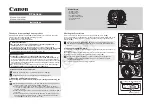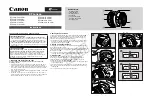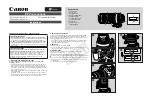11
Connections
Micro SD Memory Slot on the Bottom Board
Remove the cap at bottom of the camera to insert the SD memory card (customer-supplied).
•
Connecting to the RJ-45
Connect a standard RJ-45 cable to the network port of the network camera. Generally a cross-over cable is used
for directly connection to PC, while a direct cable is used for connection to a hub. You can also use a router
featuring PoE (Power over Ethernet) to supply power to the camera.
•
Connecting Alarms
AI (Alarm In): You can use external devices to signal the network camera to react on events. Mechanical or
electrical switches can be wired to the AI (Alarm In) and G (Ground) connectors.
G (Ground): Connect the ground side of the alarm input and/or alarm output to the G (Ground) connector.
AO (Alarm Out): The network camera can activate external devices such as buzzers or lights. Connect the
device to the AO (Alarm Out) and G (Ground) connectors.
•
Connecting the Power
Connect the power of 12 VDC for the network camera. Connect the positive (+) pole to the ‘+’ position and the
negative (-) pole to the ‘-’ position for the DC power.
–
Be careful not to reverse the polarity when connecting the power cable.
–
A router featuring PoE (Power over Ethernet) can also be used to supply power to the camera.
–
For the power specifications, refer to the Appendix, Product Specification.
–
Power for PoE switch must be turned off if using 12 VDC.
•
Connecting Audio
Connect Speaker to Audio line output and external Mic to Audio input line.


















